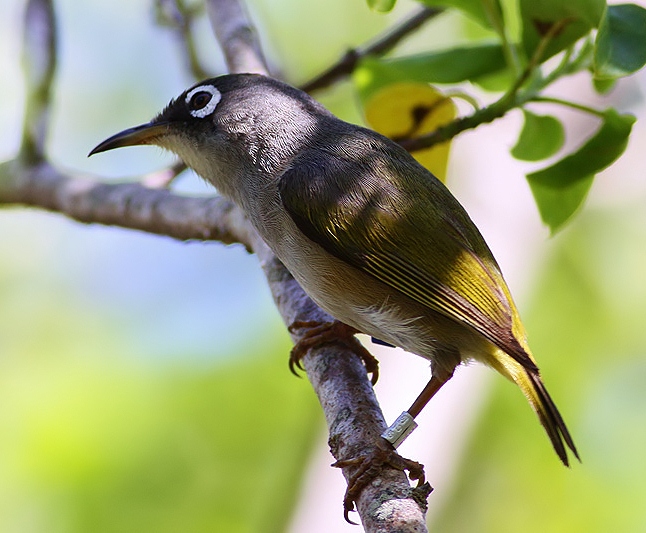 |
| Photo by Mike Pope (World Birds) |
Common name:
Mauritius olive white-eye (en); olho-branco-da-ilha-Maurícia (pt); zostérops de Maurice (fr); anteojitos de Mauricio (es); Mauritius-brillenvogel (de)
Taxonomy:
Order Passeriformes
Family Zosteropidae
Range:
This species is endemic to the island of Mauritius, presently being confined to the a small area on the south-west of the Black River Gorges National Park.
Size:
These birds are 8-10 cm long and weigh around 8 g.
Habitat:
They are mostly restricted to native upland rainforests, but can also be found in forest clearings and nearby plantations. They are present at altitudes of 200-600 m.
Diet:
The Mauritius olive white-eye feeds mainly on the nectar of Syzygium jambos, Litsea monopetala, Rubus alceifolius and Ligustrum robustum, but also takes fruits, insects and other invertebrates.
Breeding:
These birds breed in August-March. They nest in a small cup made of grasses and palm fibres and moss, woven onto the branches of a tree. There the female lays 2-3 eggs which are incubated for 12-13 days. There is no information regarding the fledging period, but it lasts 11-16 days in the closely related Seychelles white-eye Zosterops modestus.
Conservation:
IUCN status – CR (Critically Endangered)
This species has a very small breeding range and the global population is estimated at just 190-296 individuals. The population has been declining at a rapid rate in recent decades, mainly due to habitat destruction and degradation caused by the introduction of exotic plants, and predation by introduced mammals and birds, such as rats and red-whiskered bulbuls Pycnonotus jocosus and also native Mauritius black bulbuls Hypsipetes olivaceus. Intensive management action including predator control at nest sites, rescue of wild nests, artificial incubation and hand-rearing of offspring, and a trial release of birds to the predator-free, restored offshore islet Ile aux Aigrettes have had some success in halting further population declines in this species.







